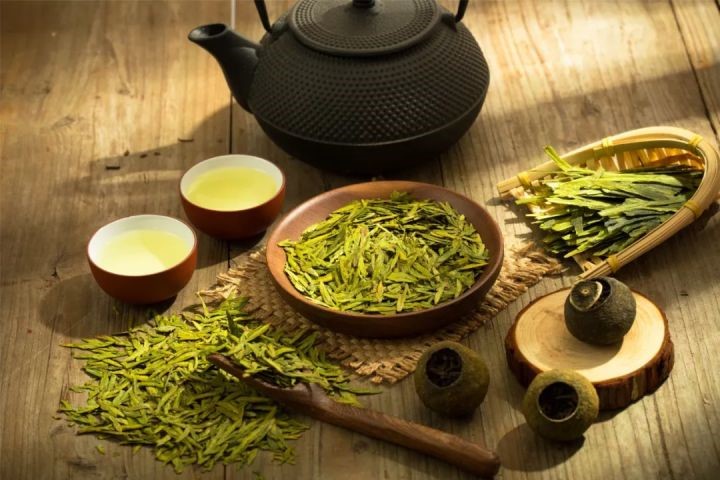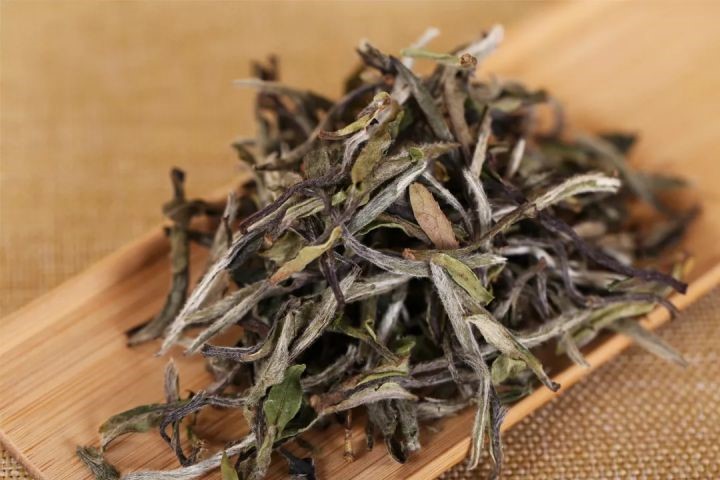According to “The Classic of Tea” written by Lu Yu in Tang dynasty, “tea serves as a drink, originating from the Shen Nong peroid.” Tea drinking emanates from China and has become a “national drink” and an impartible part of Chinese life.
Based on the historical records, the history of tea making can be traced back to the Zhou dynasty. Tea is used in many different methods in various periods. In Zhou dynasty, fresh tea leaves were used as tribute; in the Western Zhou dynasty, tea was used as a sacrifice; during the Spring and Autumn Period and the Warring States Period, tea was considered as food and medicine; in the Western Han dynasty, tea was traded as the main commodity; in the Western Jin dynasty, tea was used as a soup drink. Later on, in the Tang dynasty, the emergence of steamed compressed tea marked the birth of the first tea category in history—green tea; then in the Song dynasty, steamed loose green tea was invented, and then in the Ming dynasty, fried green tea, yellow tea, black tea, and dark tea were created. Afterwards, in the Qing dynasty, white tea and oolong tea were created. China is vast in territory, thus teas in different regions have different characteristics and producing techniques. So far, the six major types of teas are formed, which are green tea, black tea, oolong tea, white tea, yellow tea, and post-fermented tea ( or dark tea).
The six types of tea are classified according to different processing techniques. The most fundamental reason is that the biochemical reactions of the substances in the tea during the producing process finally show that these substances have different contents and proportions and produce new materials, such as different teas have different amounts of flavanols and catechins.

One example is the difference between green tea and black tea. The process for making green tea is withering, fixation, twisting and drying, while the process of making black tea is withering, twisting, fermentation and drying. Therefore, the taste of green tea is relatively sweet, with the characteristics of “green leaf and green tea soup”, with a tender fragrance or roasting aroma; and the taste of black tea will be more stimulating and thicker than that of green tea, with the characteristics of “red leaf and red tea soup”, which has a rich floral and fruity flavor. In essence, their contents and proportions are different. For green tea, after heating, tea polyphenols are not substantially oxidized, so the soup color of green tea shows chlorophyll and other non-processed pigments’ (anthocyanin) color. For black tea, after the fermentation process, most of the tea polyphenols are oxidized into the pigments produced by theaflavins, thearubigins and others, meanwhile, a large amount of aroma substances are also generated, hence the black tea soup will be orange or bright red, and the aroma is also stronger than that of green tea.
Green tea
Green tea is one of China’s major teas. It belongs to unfermented tea. The production of green tea completely retains the green color and fresh taste of the tea leaves, and the soup color is green and fresh.
Tips:
- Production process: Drinks made by taking new leaves or buds of tea tree without fermentation, through greening, shaping, drying and other processes. “Killing green” or fixation is the key process for forming green tea quality. The methods of fixation include stir-fry, baking, drying and steaming.
- Taste: fresh, elegant and sweet.
- Functions: reduce fat, lose weight, prevent radiation.
- Drinkable season: spring and summer.
- Applicable utensils: transparent glass, Gaiwan.
- Representive teas: West Lake Longjing, Biluochun, Lu’an Guapian, Xinyang Maojian, Taiping Hou Kui, Lushan Yunwn

White tea
White tea, a kind of micro-fermented tea, is a traditional famous tea created by Chinese tea farmers. It is a treasure of tea and has a long history. The production of white tea retains the integrity of the shape of the tea leaves. It is covered with silver, like silver and snow, and the tea soup is yellow and green.
Tips:
- Production process: After picking, buds and leaves are made through the procedures of withering, baking (or drying in shade), picking, reheating, etc. without killing green or twisting. Withering is the key process for forming the quality of white tea.
- Taste: light, sweet and fresh. New tea has the taste of raw soy milk, and it become sweeter as the time goes by.
- Effects: deal with hangover, clear away heat and nourish the lungs, calm liver and blood, reduce inflammation and detoxify, reduce blood pressure and reduce fat, eliminate fatigue and other effects. Aged white tea has a good antipyretic effect.
- Drinkable season: suitable for all seasons.
- Applicable utensils: glassware.
- Representive tea: white peony, white silver needle, Shou mei .

Black tea
Black tea, which is a fully fermented tea, is the second largest tea category in China. In China, its name is “Red tea”, which is based on the red color of the tea soup and the bottom of the leaves after brewing.
Tips:
- Production process: After picking the buds and leaves, the tea is refined through a series of processes such as withering, twisting (cutting), fermentation, and drying.
- Taste: soft and gentle, sweet.
- Functions: digestion, promote appetite, diuresis, eliminate edema, and strengthen heart function, refreshing, nourishing the spleen and stomach, anti-aging.
- Drinkable season: autumn and winter.
- Applicable utensils: white porcelain pot, white jade cup, white porcelain cup.
- Representative teas: Keemun, Lapsang souchong (the originator of black tea), Dianhong, Jinjunmei

Oolong tea
Oolong tea, semi-fermented tea, is a tea category with distinctive Chinese characteristics. Combining the production methods of green tea and black tea, its quality is somewhere between green tea and black tea. It has both the strong flavor of black tea and the fresh fragrance of green tea. Oolong tea evolved from the Gongcha Dragon Ball and Phoenix Cake in Song Dynasty.
Tips:
- Production process: after picking, buds and leaves are produced for excellent quality using the processes of killing green, carving, shaking, semi-fermenting, and baking.
- Taste: various range of flavors, aftertaste sweet, fresh and refreshing.
- Effects: beauty, weight loss, detoxification, blood fat reduction, anti-aging, maintain hearing.
- Drinkable season: summer and autumn.
- Applicable utensils: Zisha clay pot, white porcelain Gaiwan.
- Representative teas: Dahongpao, Tieguanyin, Dongding Oolong, Phoenix Daffodil.

Post-fermented tea
Post-fermented tea, or dark tea, a , also named “Black tea” in China, gets its name because the appearance of the finished tea soup is black. The earliest dark tea was produced in Sichuan, and was made from green hair tea by autoclaving.
Tips:
- Production process: After picking the buds and leaves, it needs to be piled (fermented) after drying and rolling, and then dried. “Wodui” is a key process in the production of dark tea.
- Taste: ripe tea is mild, full-bodied, smooth and has a medicinal aroma; raw tea is more irritating and has a green and sweet fragrance, similar to the plum fragrance.
- Functions: supplement dietary nutrition, help digestion, degrease, smooth stomach, reduce fat and lose weight, soften human blood vessels, prevent cardiovascular diseases, etc.
- Drinkable season: autumn and winter.
- Applicable utensils: Zisha clay teapot, clay pottery cup, porcelain cup and porcelain pot
- Representative teas: Liubao tea, Yunnan Pu’er, Anhua dark tea.

Yellow tea
Yellow tea is a lightly fermented tea. The characteristic of yellow tea is “Yellow Leaf Yellow Soup”. Hunan Yueyang is the hometown of Chinese yellow tea.
Tips:
- Production process: After picking, the buds and leaves are made by killing green, twisting, stuffing and drying. The key process is “sweltering”. The method is to wrap the green tea leaves and twisted tea leaves in paper, or cover them with wet cloth after stacking. Non-enzymatic auto-oxidation forms yellow.
- Taste: sweet and refreshing.
- Function: rich in amino acids, improve eyesight, do not hurt stomach, refresh your mind, eliminate fatigue, helps in digestion.
- Drinkable season: spring and summer.
- Applicable utensils: glass cups and Gaiwan.
- Representative tea: Junshan Silver Needle, Huoshan Yellow Bud, Mengding Yellow Bud.


